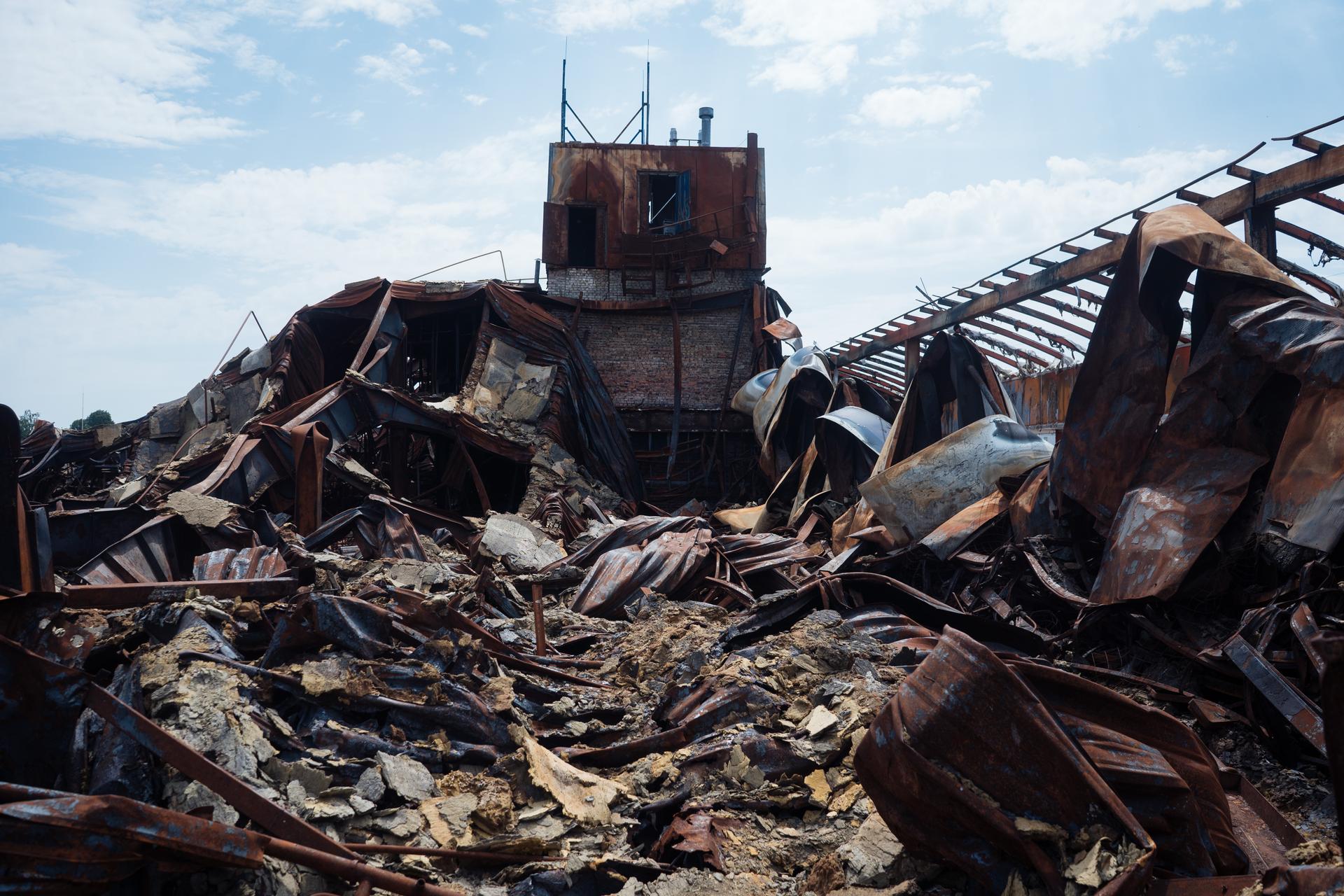In the city of Chernihiv, in northeastern Ukraine, the wreckage of a bombed home improvement store has stood twisted and rusting since Russian forces attacked it on just the fifth day of the full-scale invasion in February of 2022.
One morning this past spring, ecologist Kateryna Polianska carefully crunched over broken glass and stepped around piles of metal roofing that appeared to have melted into heaps in the inferno of the attack.
“This is evidence that there were huge temperatures, there were a lot of burning materials inside of this building,” said Polianska, who works with a leading Ukrainian nongovernmental organization called Environment People Law and has crisscrossed Ukraine collecting samples of soil and rubble from sites like this one.
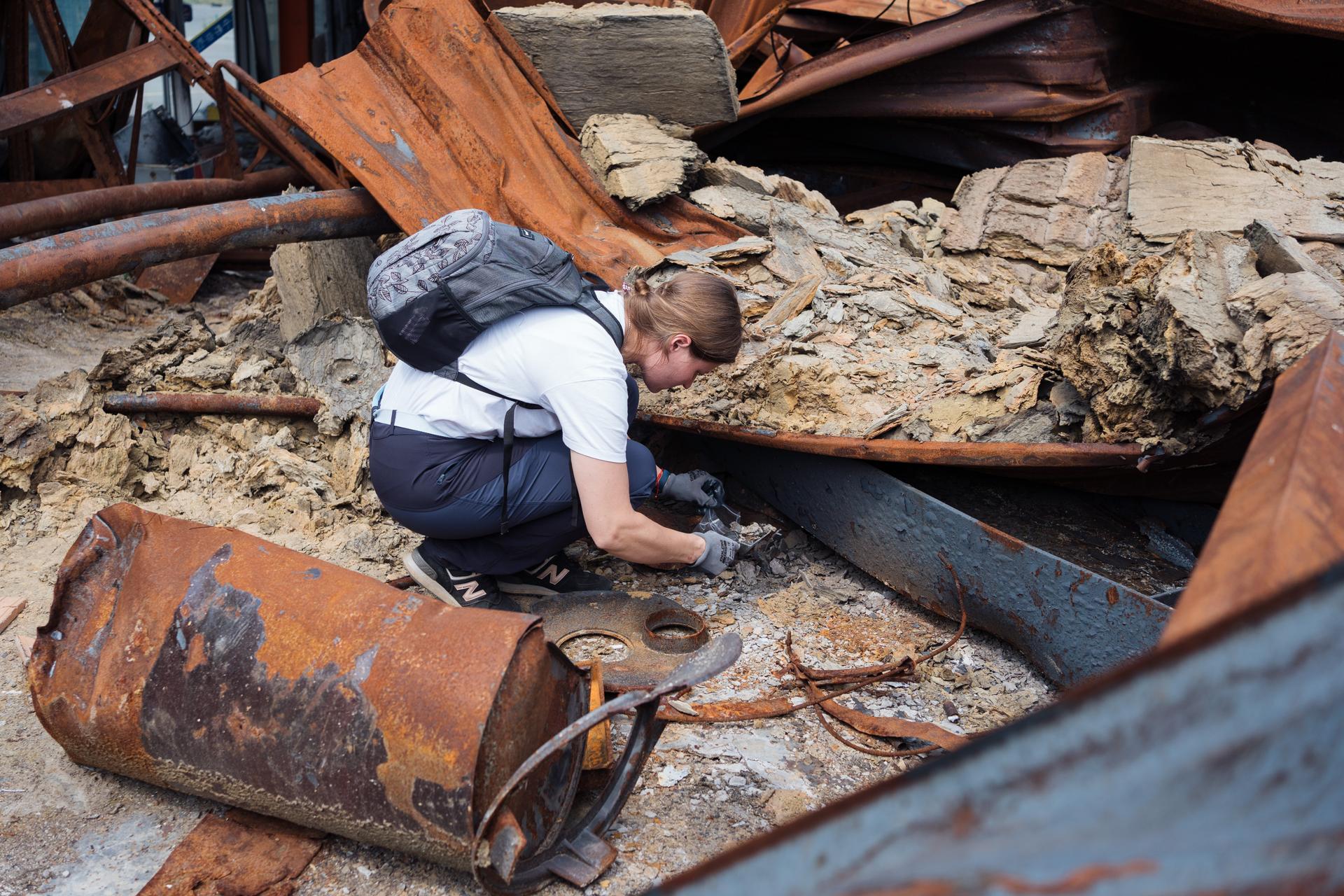
Nearly a year and a half into Russia’s full-scale invasion of Ukraine, its impact has been felt most acutely in lost lives, flattened cities and destroyed infrastructure. But the environmental damage from combat has also contaminated Ukraine’s soil, water and air at a cost the government estimates to be $56 billion. This impact is likely to be one of the longest-lasting legacies of the war, persisting for decades after the fighting stops.
At the destroyed home improvement superstore in Chernihiv, Polianska said the immediate concern was air pollution as the paint, plastic, insulation and other building materials housed there went up in flames. Nationwide, excess greenhouse gas emissions from the first year of the war are estimated to be similar to the annual emissions of the country of Belgium.
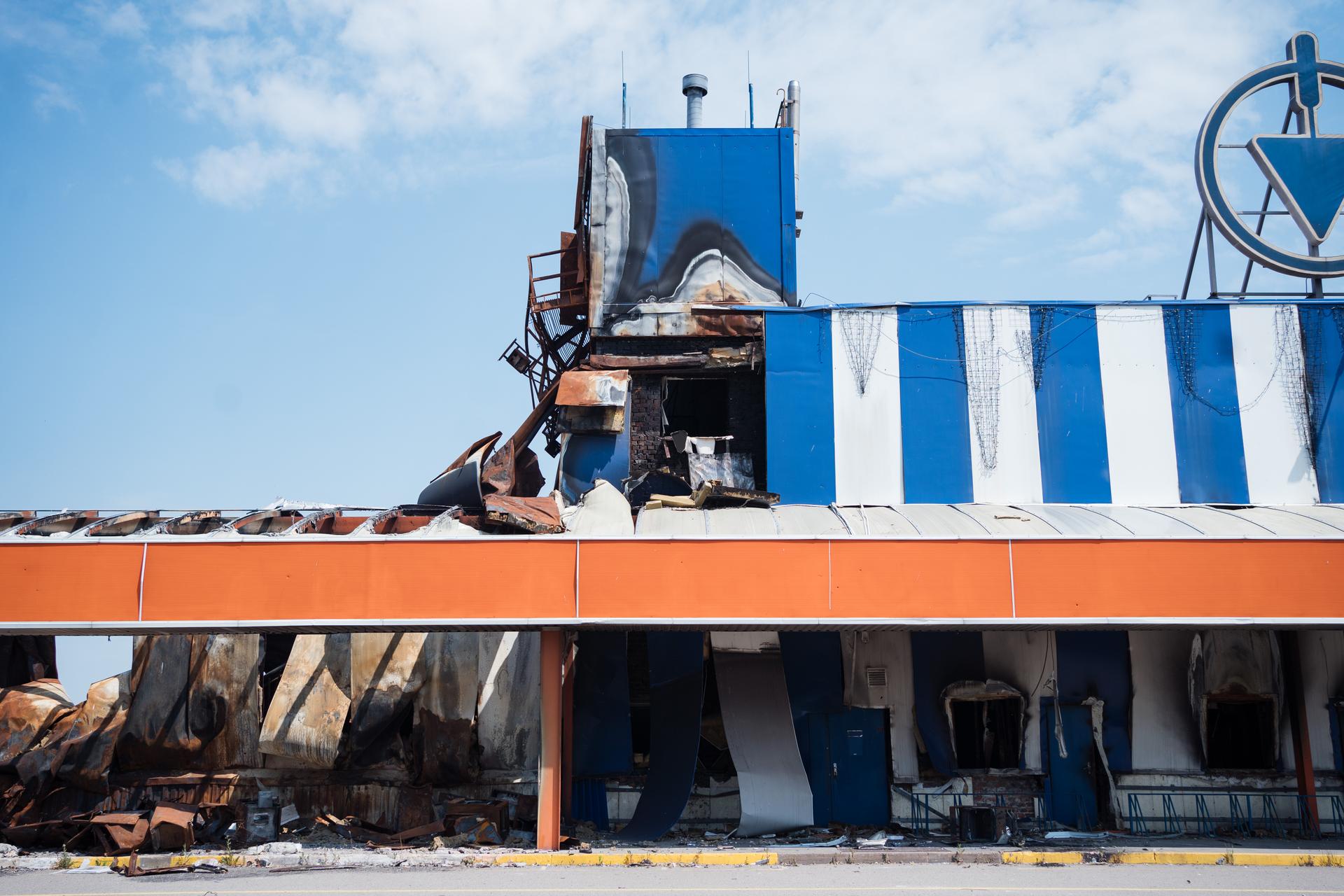
But as the wreckage has sat largely unattended, Polianska said there are now other concerns.
“We can see there is a lot of ash,” Polianska said as her footsteps through the wrecked store sent dust she warned may contain dioxins and cancer-causing materials into the air. “If there is some windy weather, it can just blow up, and people in the nearest buildings can breathe these things.”
Disposal of war waste in Ukraine – where asbestos is widespread in buildings – is also a concern for Polianska. Ukraine lacks special landfill facilities that would prevent toxins from being blown away or leaching into the soil or groundwater after being disposed of, she said.
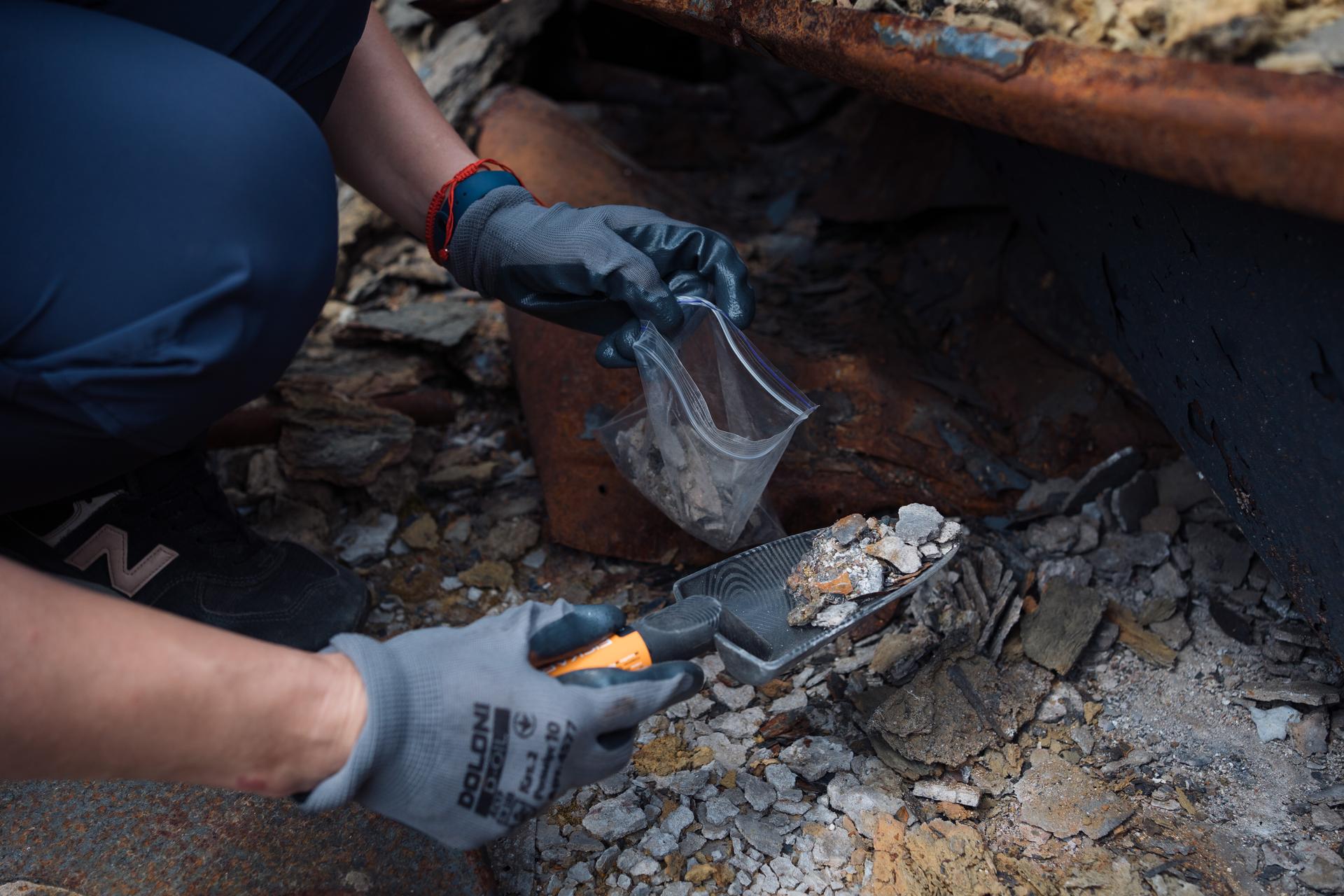
“When people try to rebuild their houses,” she said, “they just collect and remove this waste to another place. But it doesn’t solve the problem.”
Polianska wore gloves as she dug with a gardening spade into the rubble at the home improvement center, putting samples of burned insulation into plastic baggies for laboratory testing. She’s still waiting for those results, but previous testing has shown high concentrations of heavy metals in the soil underneath burned Russian tanks.
Nationwide, groundwater and soil have been contaminated by munitions and chemicals leaked from bombed industrial sites; forests have been mowed down and set ablaze by artillery strikes and missiles, agricultural fields have been compromised by mines, and drinking water has been cut off after sewage and wastewater treatment facilities have been damaged.
Russian forces targeting oil depots and energy facilities have sent more than 30,000 tons of oil into the water and soil.
In the town of Kalynivka, about 20 miles outside of Kyiv, a Russian airstrike on an oil depot last March sent 6,000 tons of oil into the soil, according to government environmental inspectors.
“The explosion was so big, we were scared even sitting in the basement. It was burning and smoking for five days after they blew up everything.”
“The explosion was so big, we were scared even sitting in the basement,” resident Yulia Samokhatka said. “It was burning and smoking for five days after they blew up everything.”
The oil that seeped into the ground eventually made its way into a nearby lake, covering about half of its 15 acres.
Almost a year and a half after the explosion, small oil slicks are still visible on the lake’s surface. Residents complain of a foul smell.
Lyudmyla Odynets, who can see the lake from her house, said people used to come there from neighboring towns to swim and sunbathe.
“Now, we wish we could go to our own backyard without this terrible smell,” she said.
Odynets worries about the health impacts of the spill. Her water comes from a well, but hasn’t noticed a funny smell or taste, so she’s continued drinking it.
Odynets guesses that local officials have higher priorities right now than cleaning up this spilled oil but that sooner or later, the war will be over and “we will still have a disaster here.”
That’s the case in many other parts of the country. Government estimates from early in the war suggest that more than a quarter of the country’s protected areas have been impacted by combat.
When the Kakhovka dam burst in June, waters rushing down the Dnipro River flooded about 250 square miles of forests, wetlands and several national protected areas, and has put animal species in the Delta region at risk of extinction.
On the edge of Kyiv, in the Holosiivski National Park, a Russian ballistic missile was shot down in early June, leaving an impact crater about 20 feet long inside a ring of charcoal-black trees.
When the missile was shot down, the fuel inside of it started a fire in the forest, said Oleksandr Novitskiy, an inspector with the national park agency.
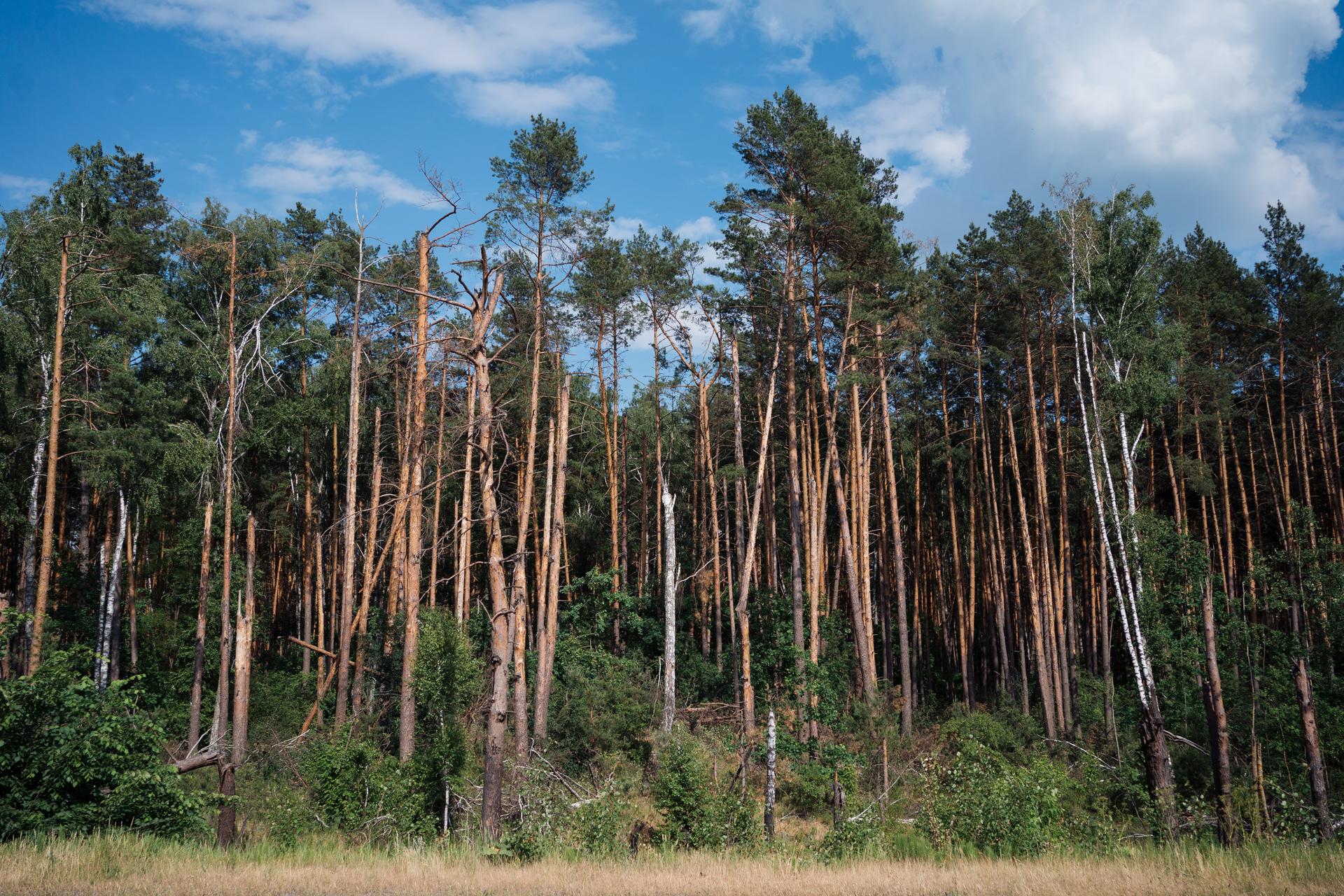
The fuel that didn’t burn up soaked into the soil, leaving an acrid smell still apparent a week after the explosion.
“These pine trees are over 100 years old. They will die,” Novitskiy said. “Even the human efforts to replant something, regrow something, will not rectify all the damage that has been done.”
Old-fashioned trench warfare waged with tanks and heavy artillery has mowed and burned down forests on a much larger scale along the more than 600-mile frontl ine in eastern Ukraine.
“In a nutshell, the forests are being destroyed,” said Yehor Hrynnyk, a biologist at the Ukrainian Nature Conservation Group. “Places where intense fighting took place in forests, these forests are no longer forests at all. They look like something on the moon.”
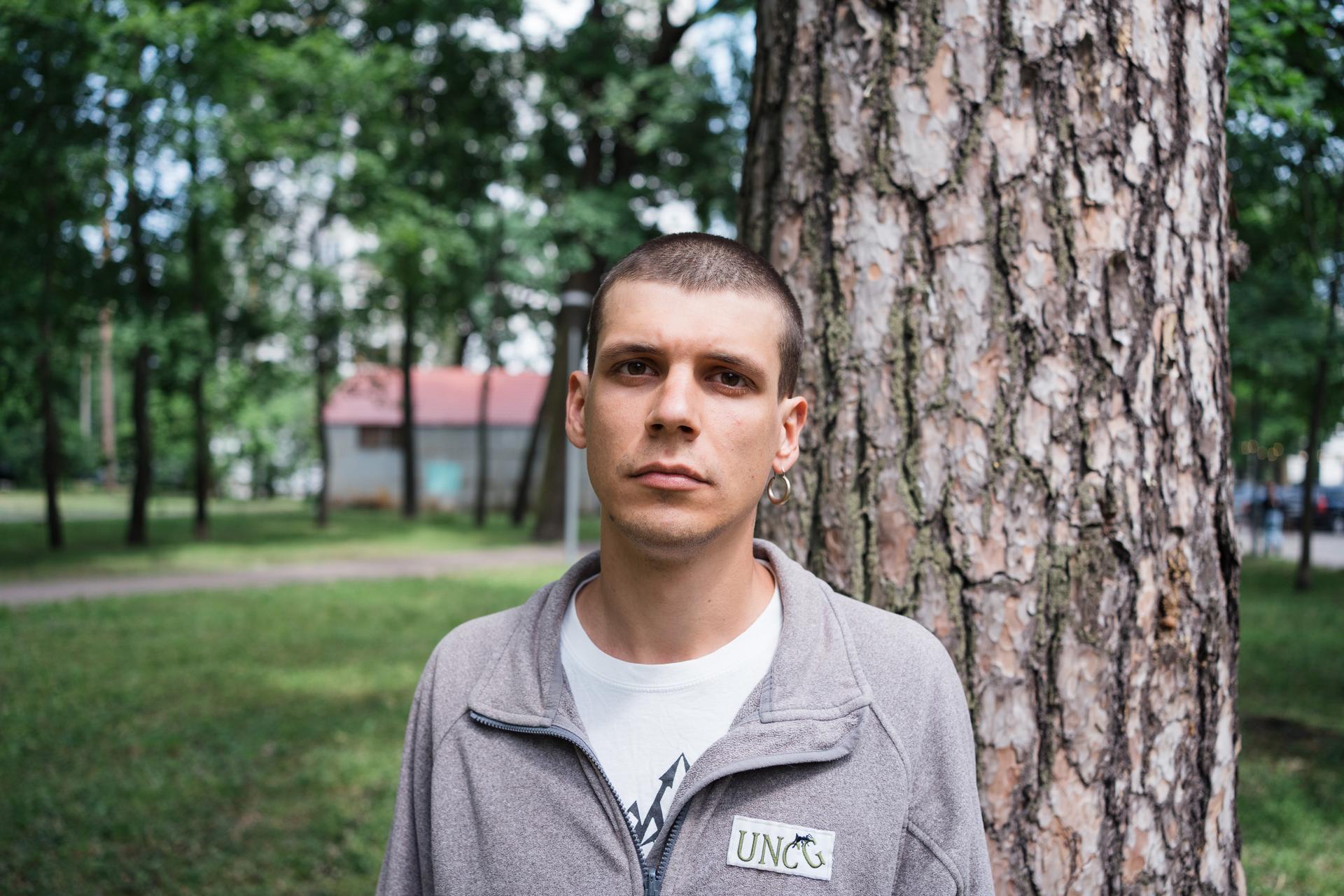
Artillery strikes and bombings have also triggered forest fires. According to one analysis, half of the roughly 20,000 wildfires in Ukraine last year occurred within about 40 miles of the front lines.
“And of course, it will take decades for the forest to regrow and in some cases, these ecosystems, there is no possibility to restore them,” Hrynnyk said.
That’s true for all of the ecological destruction caused by Russia’s war on Ukraine.
Some areas will take years to clean up, but ecologists warn others may never fully recover.
Related: A ‘green road’ leads displaced Ukrainians to shelter in ecovillages
